If there’s anything that ought to be able to shrug off the depredations of a global pandemic, it’s a Land Rover Defender.
The L663 version of the Defender was proudly displayed at the 2019 Frankfurt Motor Show, shortly before events took an unexpected turn.To complement the short-wheelbase 90 three-door and long-wheelbase 110 five-door, Land Rover has now launched the long-wheelbase 130 eight-seater. All three models were designed at the same time, the 130 reprising a badge you could get with the original Land Rover Defender, which launched in 1985 and sat on a 127-inch (3226mm) wheelbase.
So there’s a little nod to the past, but unlike that car – which was a genuinely stretched wheelbase – this time the Defender 130 sits on the same wheelbase as the 110, carrying all of its extra length aft of the rear axle.
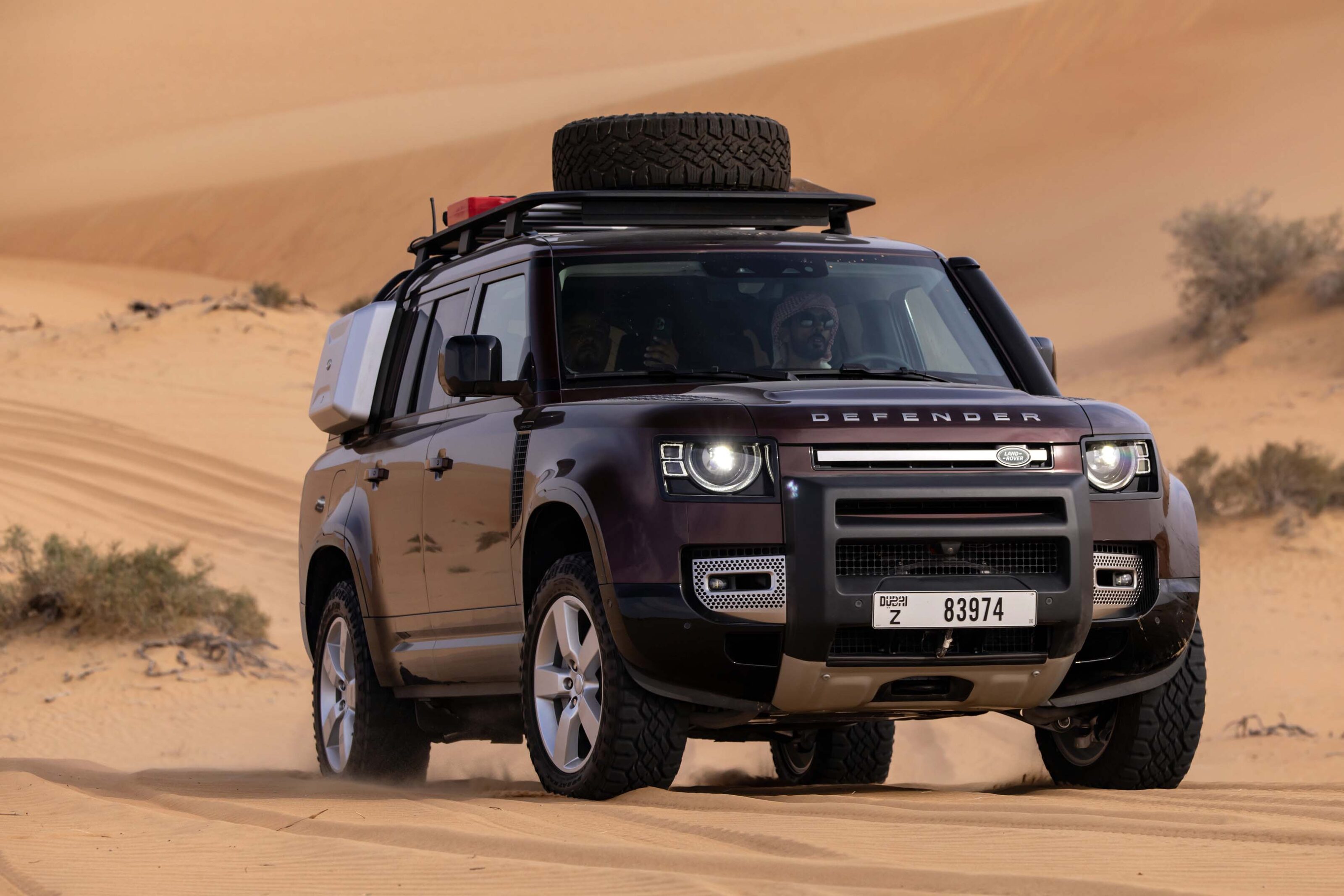
JUMP AHEAD
- How much is it, and what do you get?
- Where is this model in its lifecycle?
- How do rivals compare on value?
- Interior comfort, space and storage
- Technology in the cabin
- What is it like to drive?
- How much fuel does it use?
- How safe is it?
- Warranty and running costs
- VERDICT
- Specifications
How much is it, and what do you get?
| 2023 Land Rover Defender 130 SE features | |
|---|---|
| 19-inch alloy wheels | LED headlights |
| 12.3-inch digital cluster | 10.25-inch touchscreen |
| Navigation | Wired Apple CarPlay/Android Auto |
| 10-speaker Harman Kardon sound system | Dual-zone climate control |
| Leather upholstery (black or Cognac) | Third-row air vents |

The Defender 130 does get a few features not shared with either the existing 90 or 110 models.
Unlike the old Land Rover specification structure that allowed you to mix and match engines, trims and options in any way you saw fit, the crew from Solihull are keeping things a little bit simpler.
The 130 is offered in one SE trim level for Australia, with the choice of either the P400 petrol engine priced at $131,650 or the D300 diesel, which carries a $124,150 price tag (both before on-road costs). So far, so straightforward.
Both are six-cylinder units. We didn’t get to try the D300 on our drive event, which is something of a shame as the Ingenium diesel is good for 221kW and 650Nm from just 1500rpm, which makes it a natural for towing – more on which later.

We set out to tackle some dunes somewhere on the border between UAE and Oman in the P400 version, 294kW and 550Nm of turbocharged potency combining to deliver ample acceleration.
So that’s the basic proposition: add on-road costs plus a typical option spend of around $10,000 and your eight-seat Defender isn’t going to leave you change from $150K. So it’ll need to be good. Very good.
In order to sweeten the pot a little, Land Rover has equipped the Defender 130 with a number of standard features that you’d be reaching into your pocket to fund on, say, a 110 SE.
Air suspension is a standard fit, as is a sliding panoramic roof. There’s an exclusive Sedona Red paint finish for the 130 that replaces the Tasman Blue offered on the 90 and 110. A body-coloured rear door-mounted spare wheel cover is also a 130 thing.

Then there’s the 40:20:40 folding third row of seats, available optionally heated. To ensure that huge mass of cabin air is kept at the right temperature, the 130 also gets a three-zone climate control system with rear-cooling assist and face-level rear-row air vents.
It also gets Cabin Purification Plus, featuring Land Rover’s Nanoe tech, with advanced PM2.5 filtration to cut down on allergens and pathogens. You can even pre-purge the air from the vehicle before you get in using a smartphone app.
Finally, where the 90 and 110 are supplied as standard with a 10-inch Pivi Pro touchscreen system up front, the 130 gets a bigger 11.4-inch display. That in turn marshals a 400W Meridian 11-speaker stereo with subwoofer.
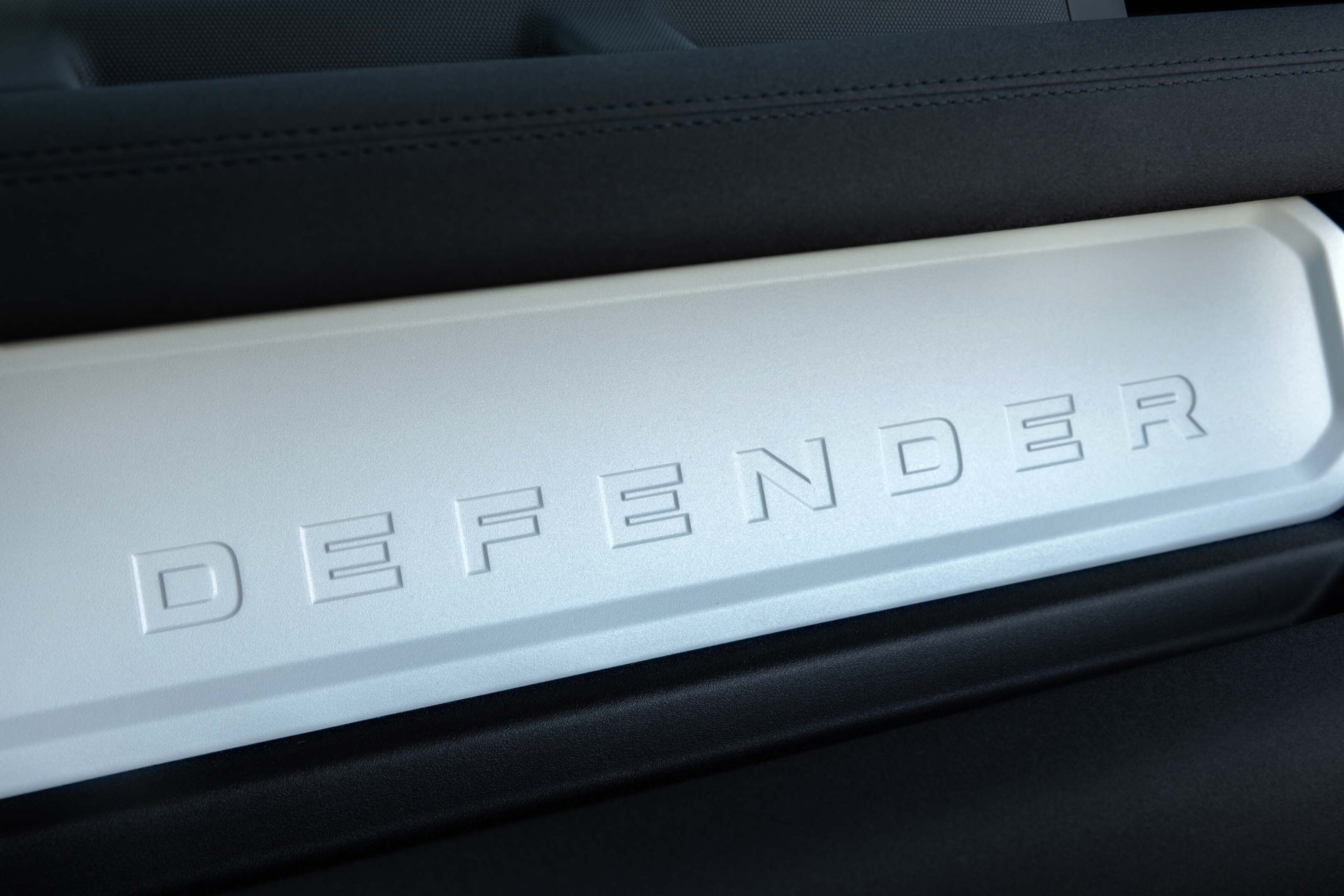
Where is this model in its lifecycle?
While the Defender 130 is new, the Defender range as a whole is set to come in for a refresh in 2024.
Those changes are unlikely to affect a Defender 130 you buy right now, with Land Rover set to bring in a few additional variants. For a model that we first saw in 2019, the Defender still feels box-fresh. That’s perhaps not so surprising, as the Defender has – like many of JLR’s products – been hamstrung by semiconductor supply shortages.
We’re assured that the vehicles bound for Australia don’t miss out on any kit. Nevertheless, place an order today and it’s likely to be a year before your shiny Defender 130 is in your garage. Patience is a virtue.
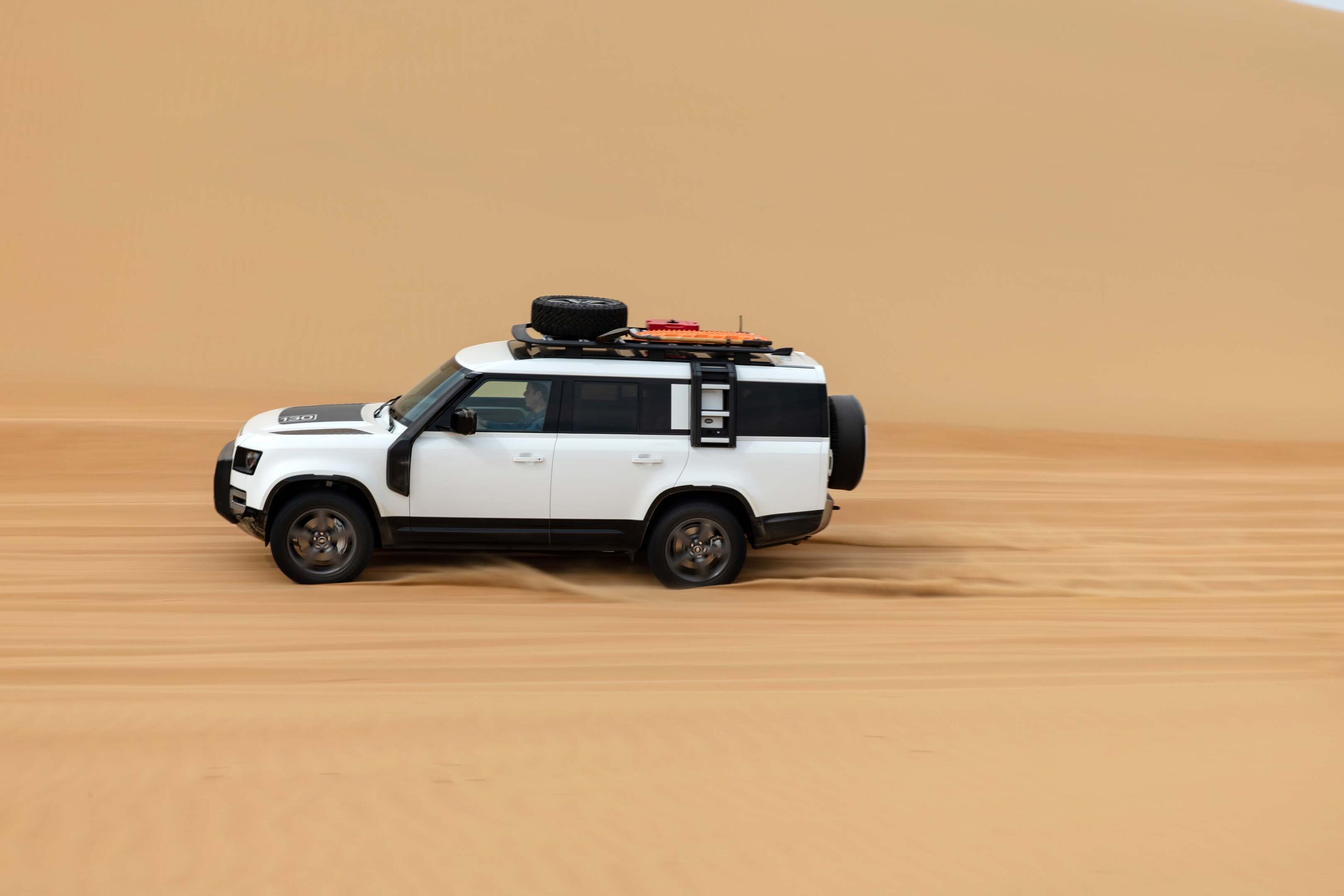
How do rivals compare on value?
Rivals? A Defender has no rivals. At least that’s what Land Rover would have you believe. The truth..?
If you’re hankering for a go-(almost)-anywhere vehicle with three rows of seats, it’s a fact that a Ford Everest will do much of what a Defender 130 can do at half the price.
No, it won’t do it with anything like the style, polish or feel-good factor, but 90 per cent of the capability at 50 per cent of the price will nevertheless be a tempting proposition for those who find the Defender 130’s asking price a bit steep.

More of a direct rival is the Toyota LandCruiser 300 VX. This is priced at $113,990 before on-road costs and you get a 227kW/700Nm 3.3-litre diesel lump, just about covering the Defender D300 in the engine department.
The Defender counters with eight seats rather than seven and has more space when you start folding chairs. The thing that could split these vehicles is towing capacity.
Whereas the Defender is rated to tow a maximum of 3000kg braked, the LandCruiser can do 3500kg. So if you’ve got a boat that wouldn’t look out of place in Monaco’s marina, you might well need to go for the Toyota. The rest of you, read on.
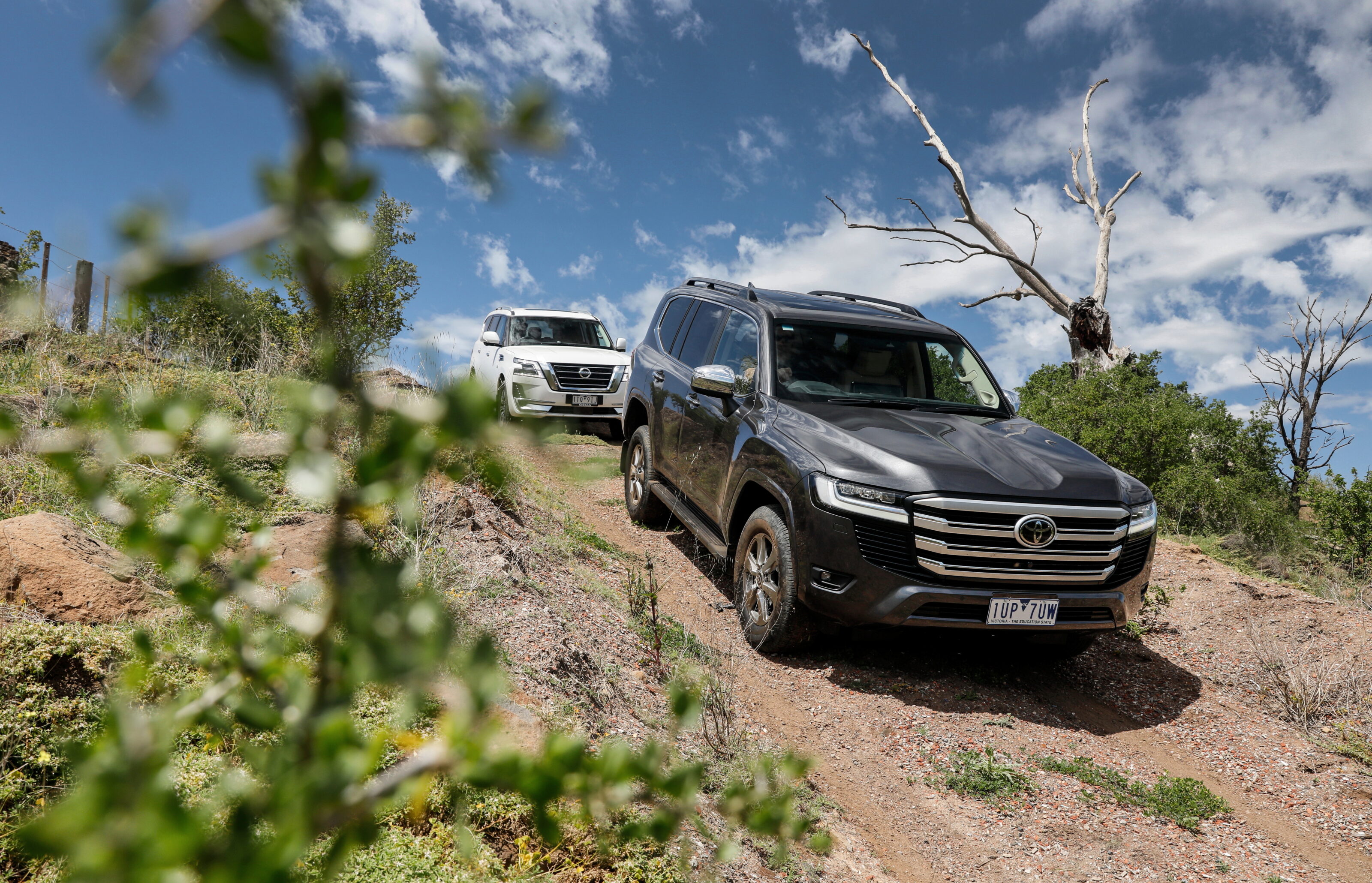
Interior quality, comfort, space and storage
I think I’ve rented studio flats with less space than the Land Rover Defender 130.
With most three-row vehicles, a six-footer like myself will only climb into the back if someone’s thrown a Mars bar in there first or there’s someone to help pull me back out. The usual drill is that you’ll put up with sitting with your knees tucked under your chin for a few minutes, start worrying about deep-vein thrombosis and then ask for assistance to get back out.
The Defender 130 is different.
I set the driver’s seat to my driving position and there was ample space in the second row. I then got into the back and was astonished to find that it was reasonably comfortable back there. Land Rover likes to mention the ‘hip to heel dimension’ which it has optimised here to prevent that uncomfortable feeling.
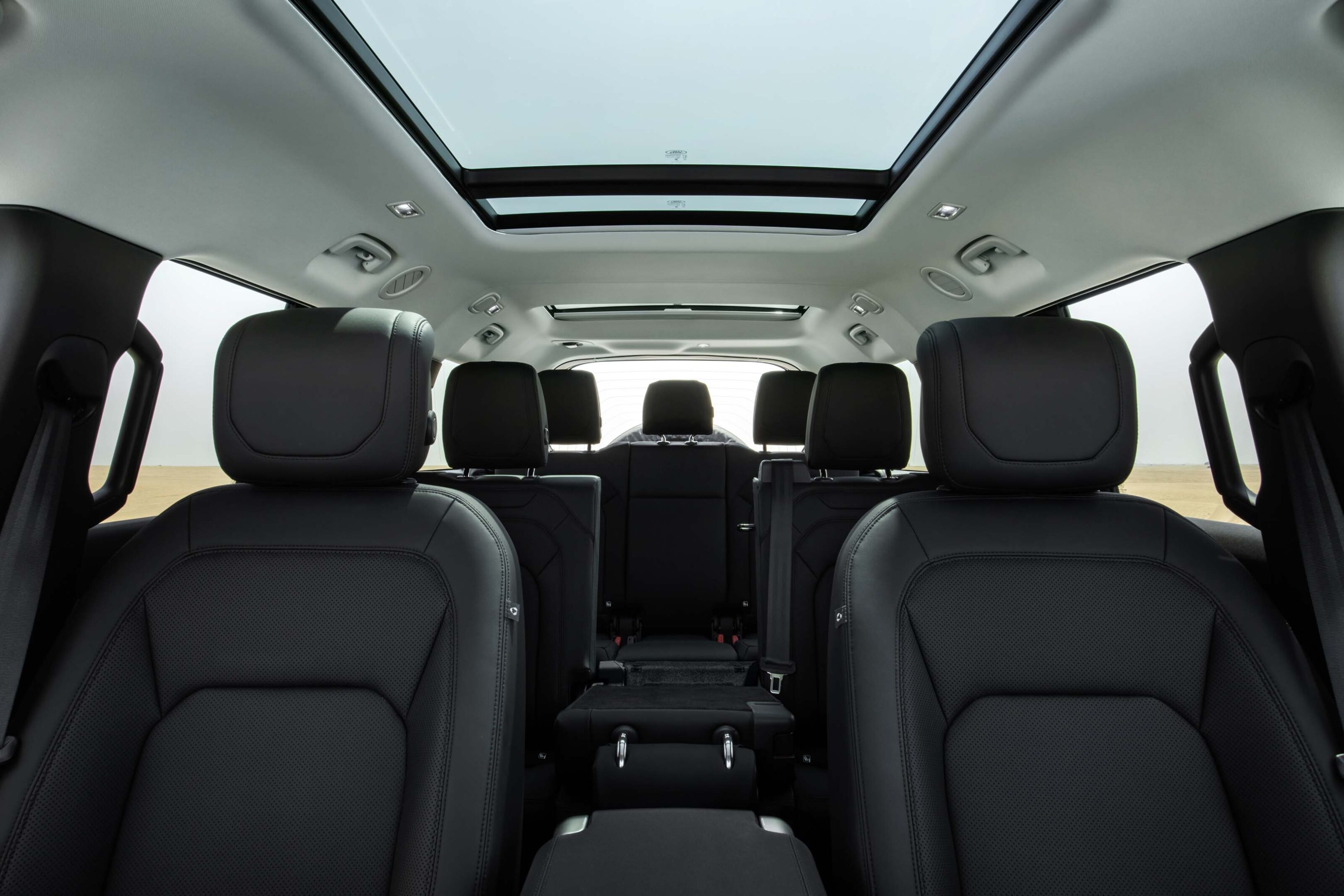
The impression of airiness is helped by an additional overhead pane for the panoramic roof and very good air-conditioning, routed through the roof to exit at face height on the pillars.
One reason why the Defender offers three seats abreast in the back for a 2+3+3 configuration is that the massive 340mm of extra rear overhang means third-row passengers’ shoulders are actually seated behind the intrusive suspension strut towers.
Their feet, however, are not and the two outermost seats force your feet rather uncomfortably inboard. It’s no great problem if there are two passengers in the back row, but with three it might get a bit squeezy for toe space.
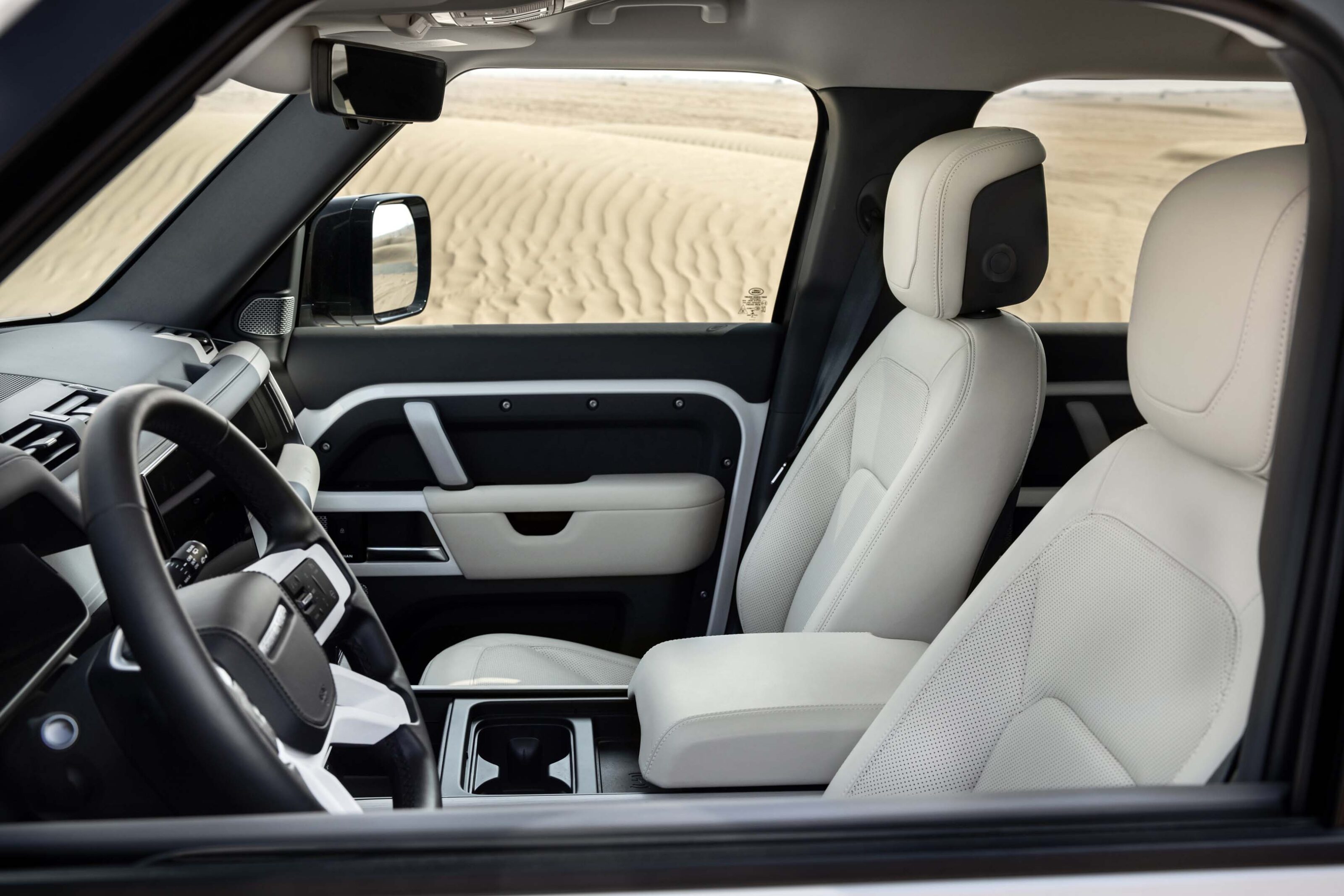
ISOFIX child seat fixings are available on the four outer seats in the second and third rows. Unlike the LandCruiser 300, the Defender also has top tethers for the back row.
Build quality seems very good, with some very upmarket cabin finishes on offer. In that regard, it’s a long way removed from the more utilitarian LandCruiser 300. The Defender 130’s cabin is fully carpeted, unlike some 90 and 110 models.
The Natural Light Oak engineered wood veneer works particularly well with the Fuji White exterior paint colour. It sounds a bit odd talking of a Defender in this way, but the model has changed and we just have to adapt accordingly.
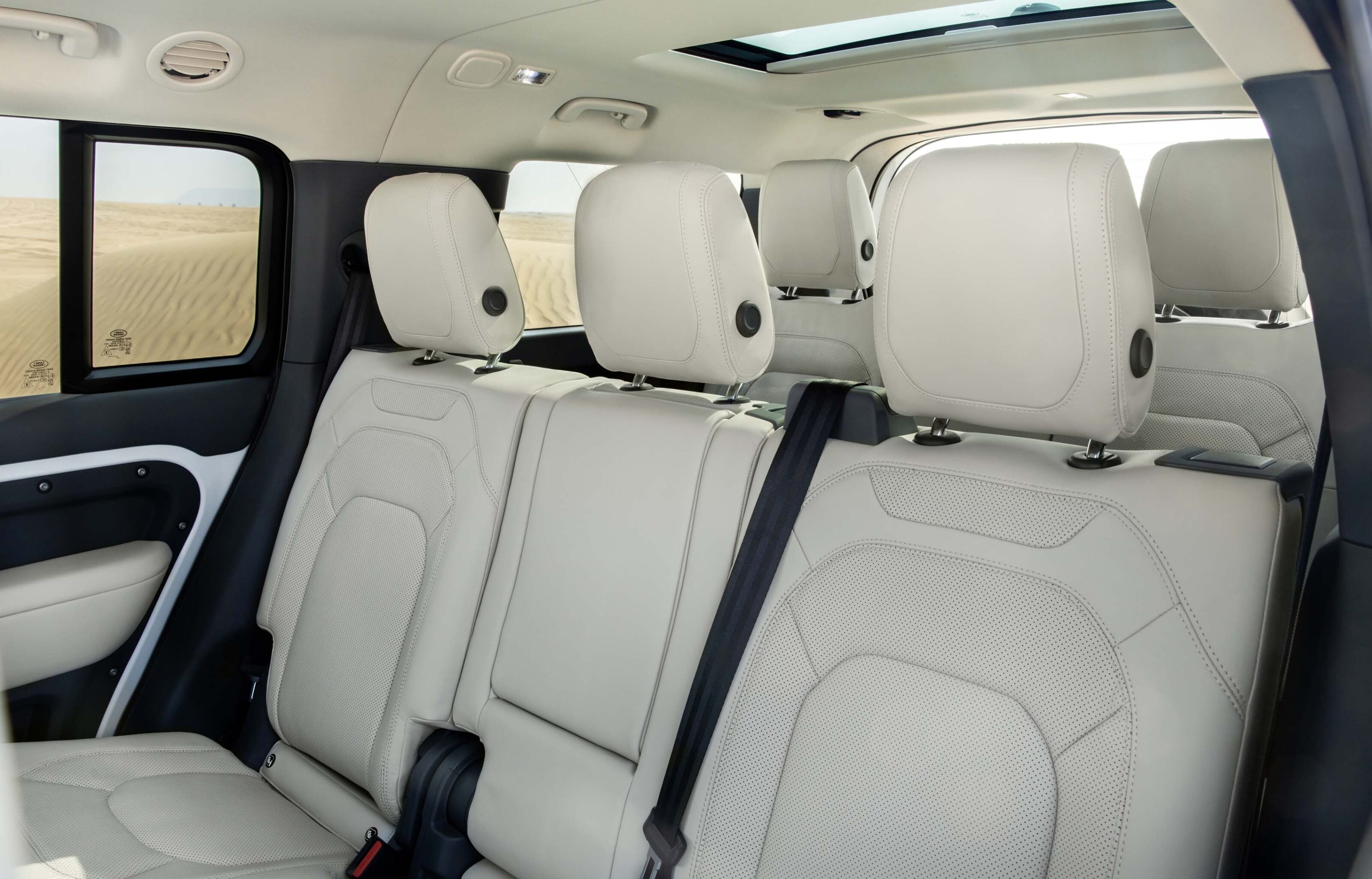
Boot space
There are all sorts of reasons why you would want a three-row car. You might have two small kids who require child seats and a sizeable dog. Or three kids who just don’t get along. Neither are uncommon scenarios. But it needs to be said that if you want to carry eight people and their luggage, you probably need two cars.
With all the seats in position, Land Rover claims 389 litres of luggage capacity for the Defender 130, and while I don’t doubt the numbers, the actual base footprint of that space is very small indeed.
Drop the third row of seats and you get a far more useable 1232 litres. Fold the second row as well and there’s 2291 litres with which to challenge Ikea to do its worst. The seats don’t fold totally flat, which limits ultimate utility a little, but should you need even more carrying capacity, there’s also the option of diving into the options list and specifying a roof transportation system.
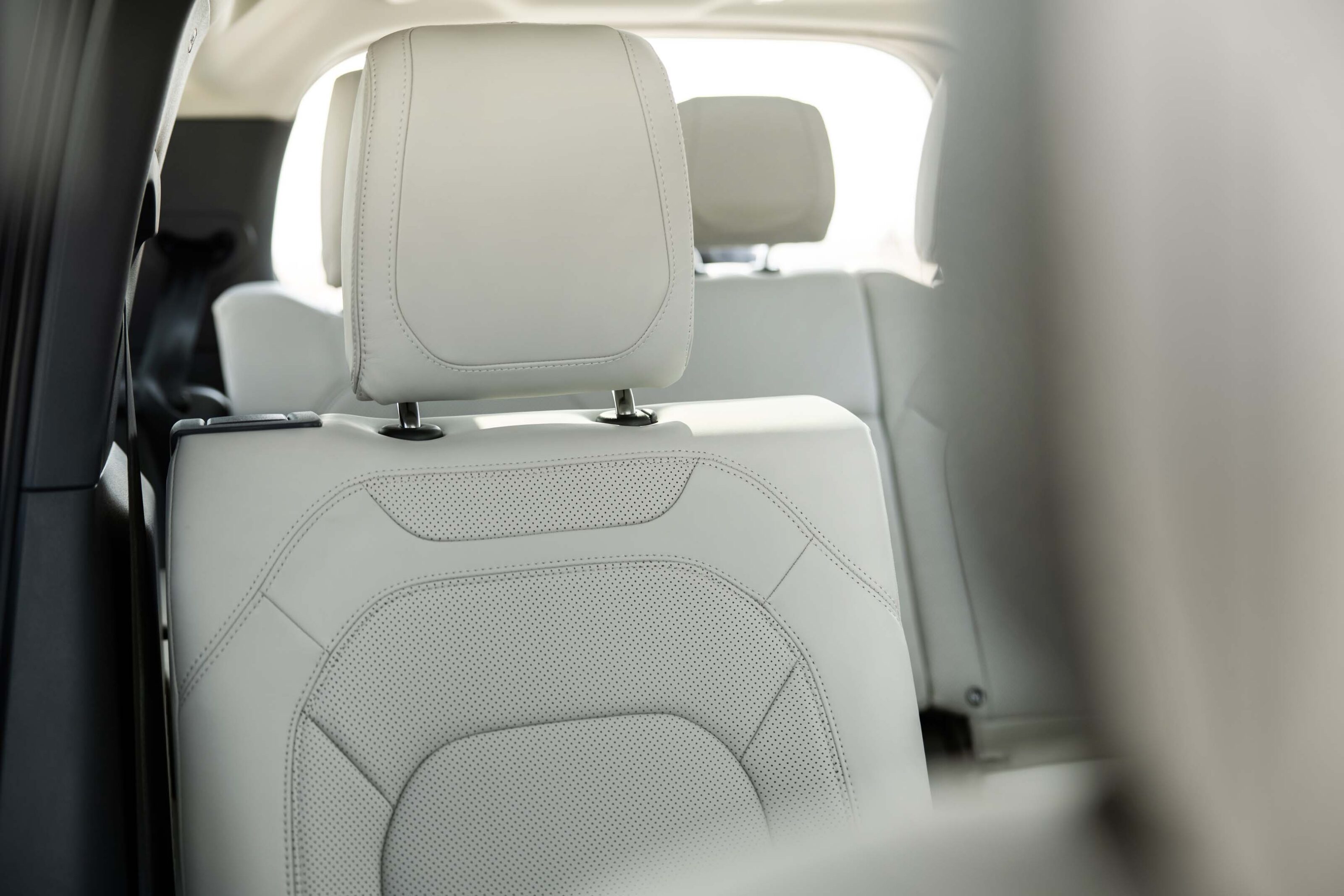
One particularly neat touch is the ability to dump the air out of the Defender’s air suspension and lower the vehicle when you’re loading it. Buttons in the luggage compartment allow you to bring the loading sill as low as possible and then raise it to its prior position.
Mini matchup: Boot space
| MODEL | WHEELBASE | BOOT |
|---|---|---|
| Defender 130 SE | 3022mm | 389-1232-2291L |
| LandCruiser 300 VX | 2850mm | 175-1004-1967L |
| Everest Platinum | 2900mm | 259-858-1823L |
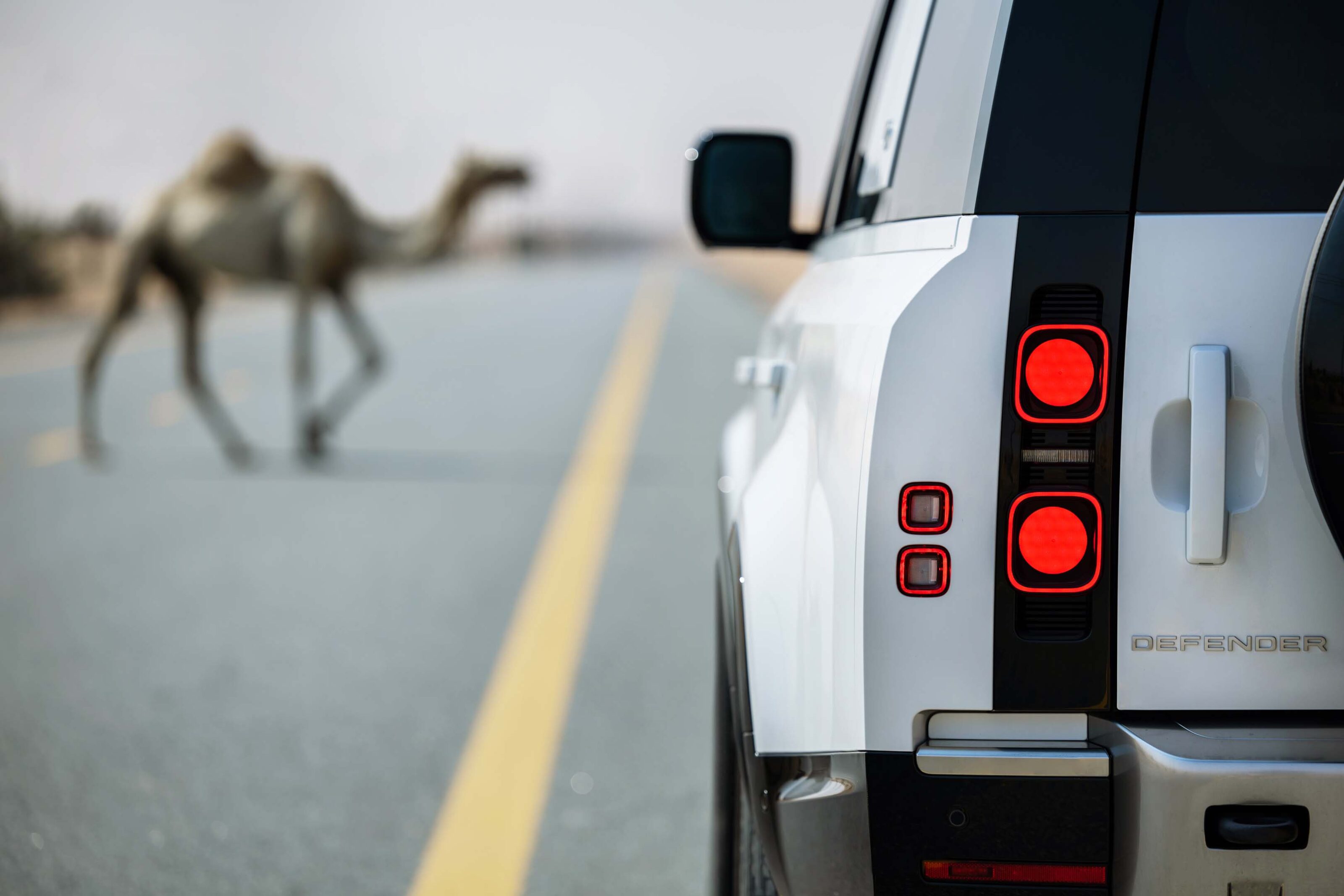
Technology in the cabin
Defenders now feature what3words functionality built into the navigation.
Yep, the Pivi Pro infotainment system can now navigate you to any three-metre square on the planet without the need for a phone signal. You’ll occasionally spot this trio of random words (yes, there is a whole Twitter account devoted to hilarious word combos) and it’s really helpful for identifying off-road waypoints.
We could cover 3000 words quite easily talking about the Defender 130’s off-road tech, covering its four-wheel drive smarts, electronic air suspension functionality, Terrain Response system, the genius camera systems and so on, but we’ve covered that in some detail in prior Defender reviews.
The Defender features some neat tech including keyless entry with automated walk-away lock. Basically, if the key is within 1.5m of the vehicle, the car unlocks and then re-locks as the key moves out of that zone.
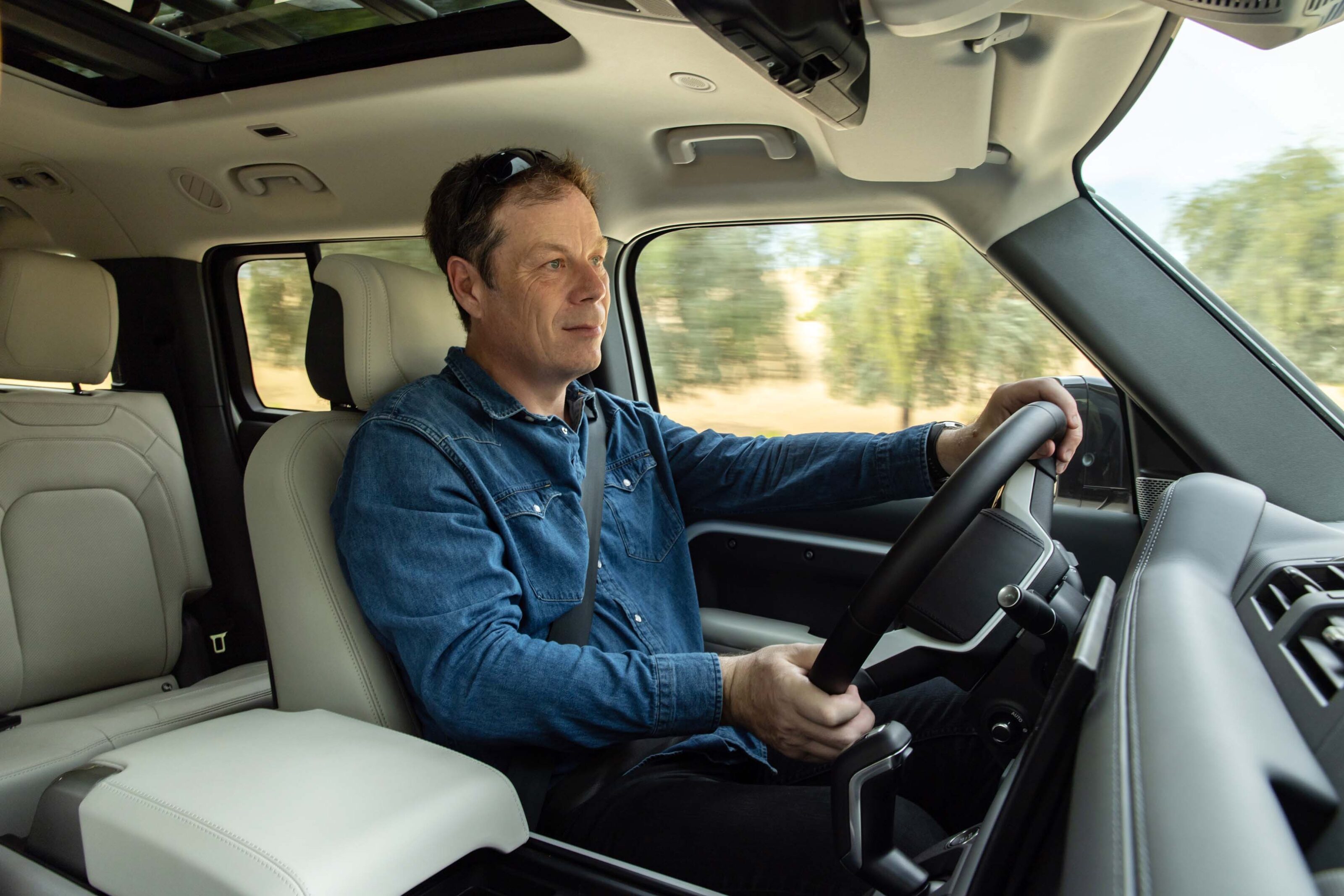
There’s wireless phone charging up front and wireless Android Auto and Apple CarPlay. Pivi Pro worked in a generally glitch-free and easy-to-navigate fashion, enabling a phone to be set up as a vehicle wi-fi hotspot, generating a one-time password if required.
Over-the-air software updates are offered. It sounds slightly churlish pointing this out on a Defender, but a head-up display is not offered.
All rows get USB-C charging points and there’s also the option of a four-zone climate control system should you want to tailor airflow even more specifically.
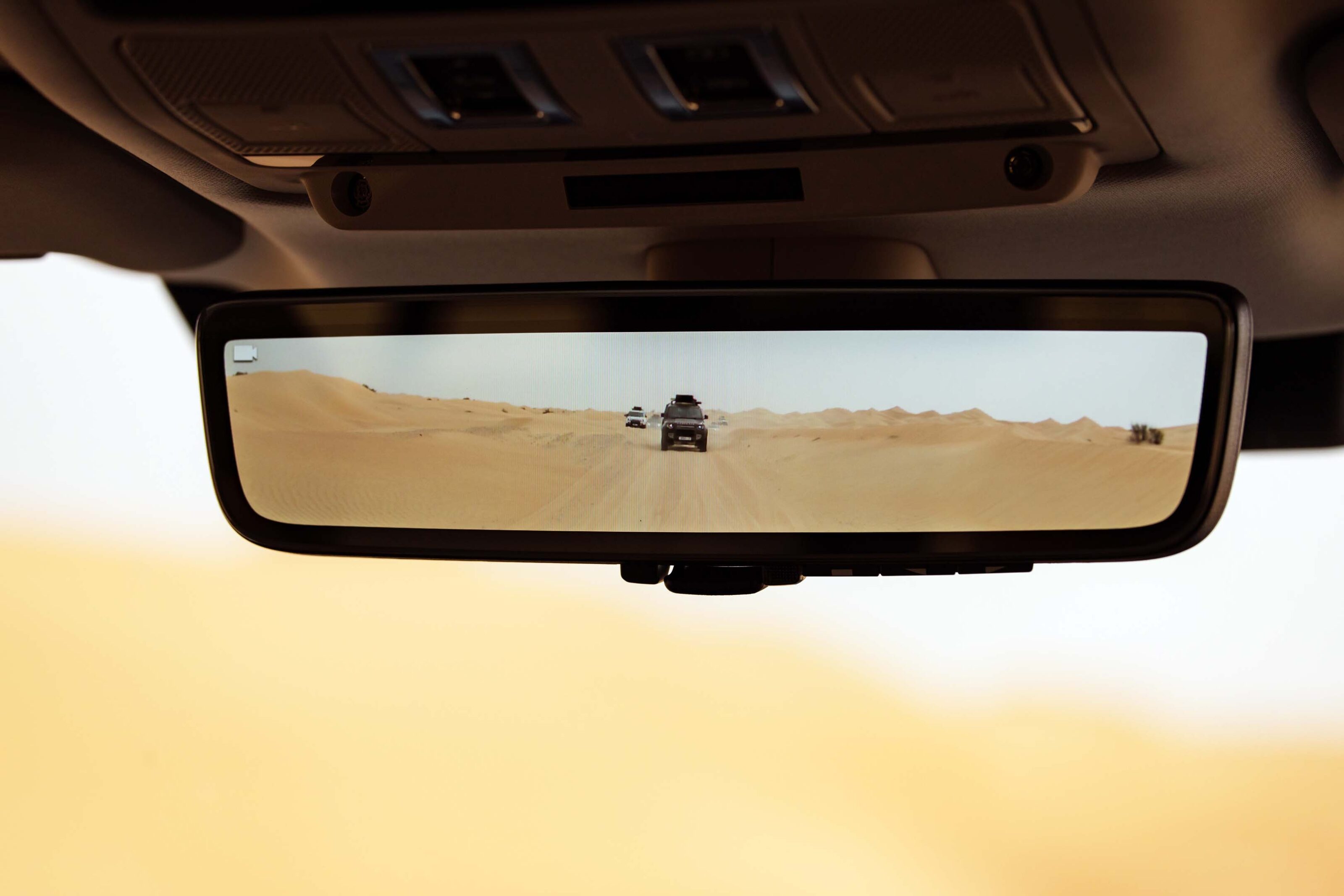
What is it like to drive?
The P400 certainly feels as if it has enough engine.
Land Rover quotes a 0-100km/h figure of 6.6 seconds and that feels attainable. Go diesel and the D300 will accelerate to 100km/h in 7.5 seconds. But that’s not how we typically use a Defender, is it? We want to get its boots dirty.
The Defender 130’s vital stats in that regard are 430mm of articulation, a 900mm wading depth, and 71.5mm of additional lift at the front (and 73.5mm at the rear) if you extend the air suspension to give the vehicle all the ground clearance it can get.
Approach, breakover and departure angles (at best) are 37.5, 27.8 and 28.5 degrees respectively. That last figure is key, because the 110 features a departure angle of 40 degrees, as the rear wheels of that vehicle are pushed right out to the corners. If ultimate off-road capability is more important than three spacious rows, go for the 110.
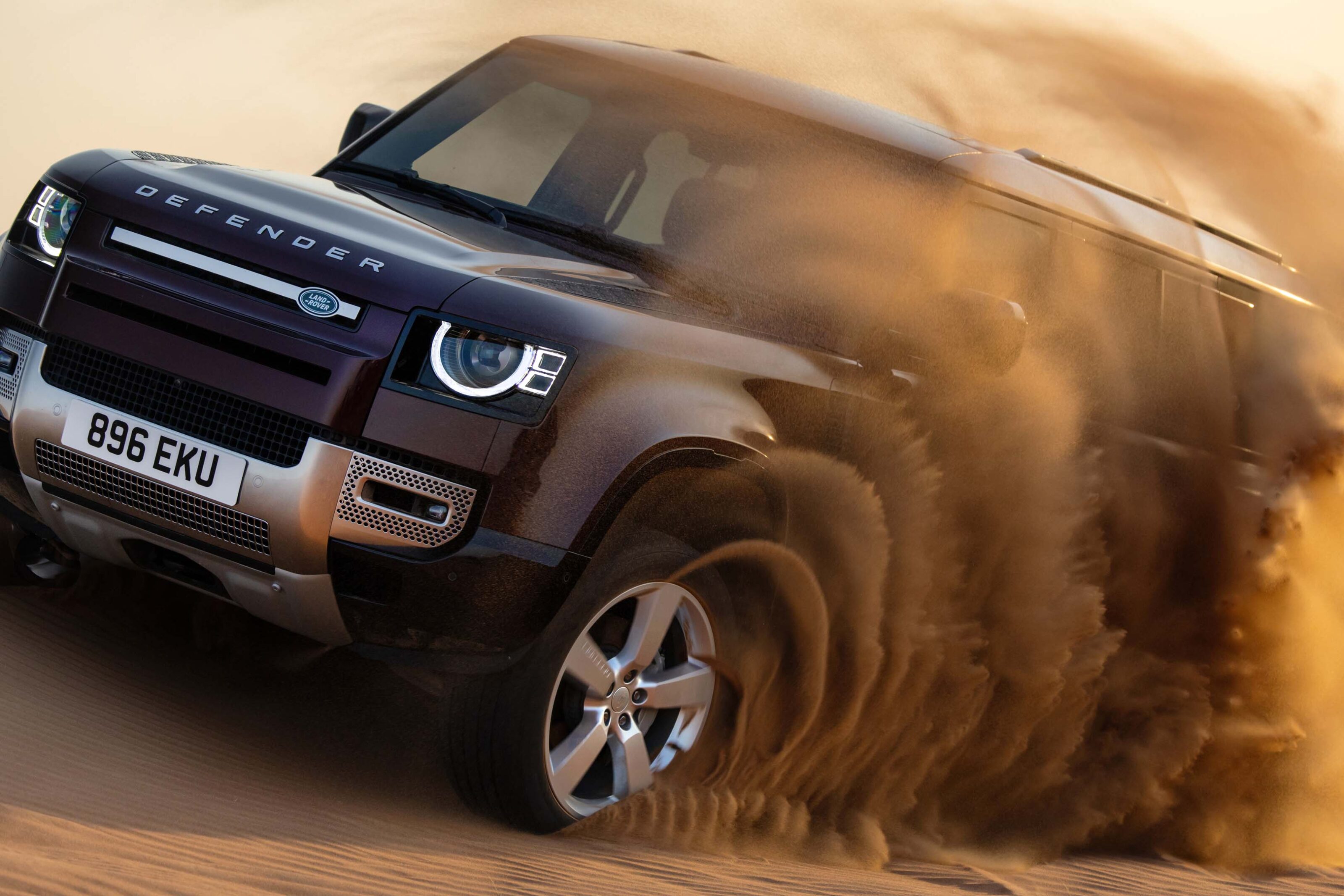
Land Rover slightly cheekily claims that the rear departure angle is better than any of its eight-seater rivals, which is technically correct. While the rear end looks long if you’re accustomed to the pert shapes of the 90 and 110, Land Rover has cleverly kicked up the angle to ensure it still offers plenty of clearance. It’s actually better than the 25 degrees on offer from a LandCruiser 300.
We didn’t have much chance to put the 130’s handling to the test on the UAE’s arrow-straight roads. I can report that at the legal limit of 160km/h, the slab-sided Defender wanders a little under crosswinds, but that’s a decidedly niche aspect of its dynamics.
Ride quality was good and body control is excellent for a big vehicle, with little head toss. That’s because, unlike its ladder-framed rivals, the Defender is a monocoque and its massively superior chassis stiffness gives engineers additional freedom to tune the suspension for a more composed ride on bitumen.
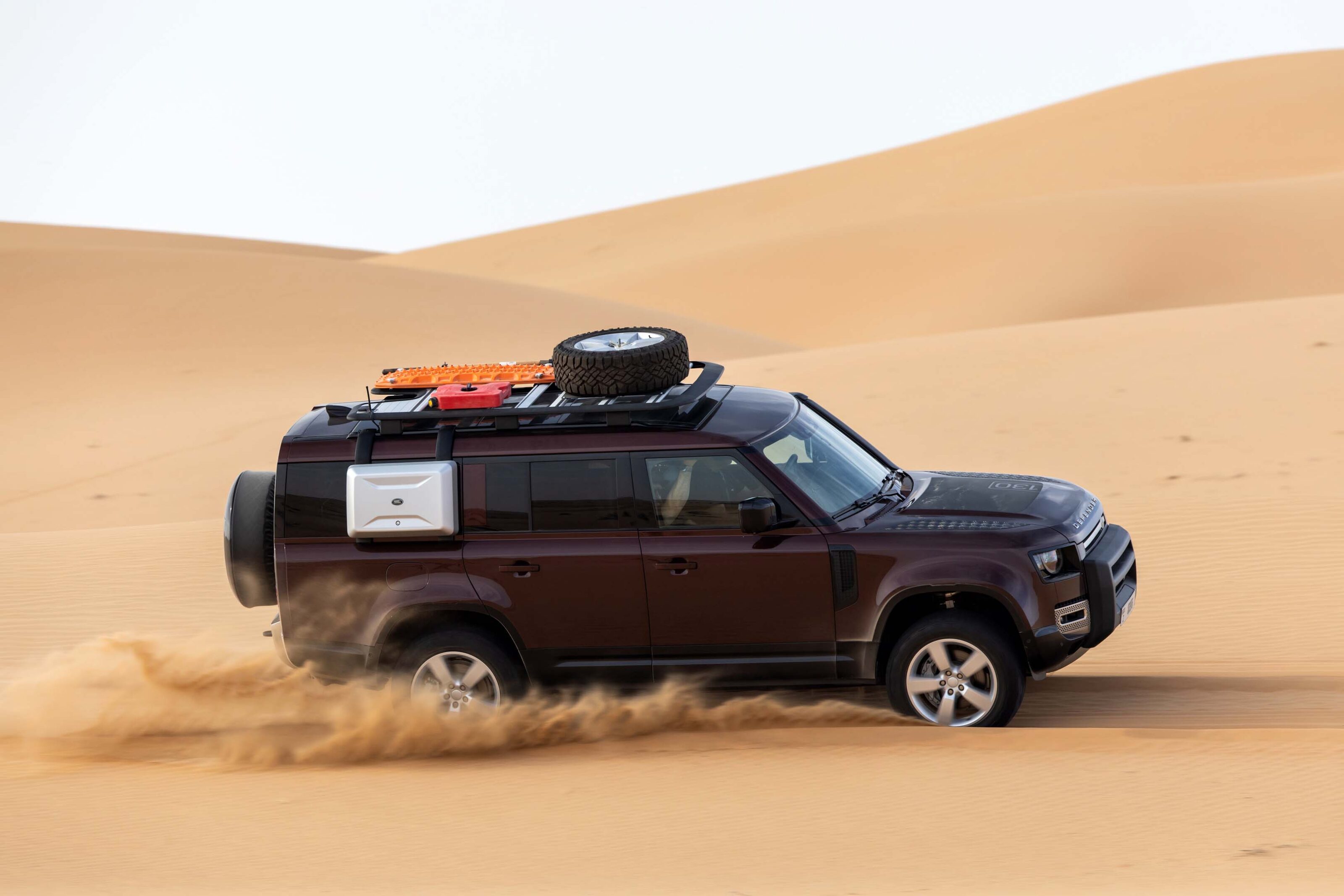
It’s worth mentioning the additional caveats that test cars were on aggressive off-road Goodyear Wrangler Duratrac tyres and any hope of assessing refinement at speed was rather scotched by the fitment of a roof rack with a shovel, MaxTrax and spare wheel whistling away in the wind.
Off-road, the Defender 130 was imperious in the dunes. With Terrain Response set to Sand mode, the throttle response was eased back a little and we didn’t require any form of assistance all day, despite the sand being especially fine.
The eight-speed ZF transmission was left to its own devices all day and did a pretty good job, although the Land Rover tech team later admitted that they preferred to drive the vehicle in manual mode on sand so as to be able to pluck one gear higher than the ZF normally uses and reduce the incidence of wheelspin.
A 130’s body is 128kg heavier than the 110, which is relatively small beer in a vehicle weighing two and a half tonnes.
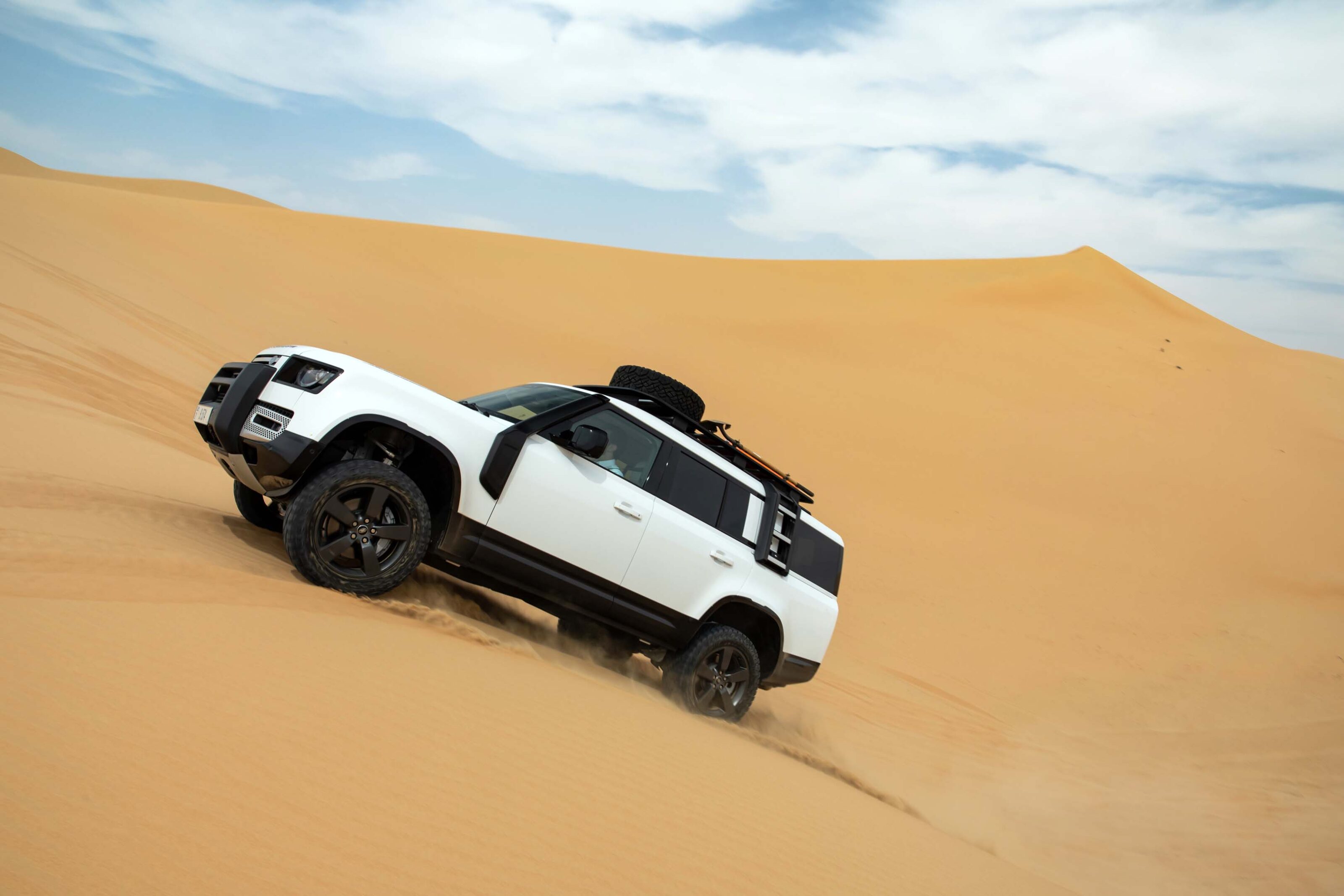
How is it on fuel?
You probably aren’t going to buy a vehicle with the external dimensions of a blimp shed if you’re fixated on fuel economy, but the news isn’t all bad.
You’ll need to fill the P400 with 95 RON and the claim is for 10.1 litres per 100km, which isn’t at all bad for a vehicle of this weight and potency. The diesel D300 model fares predictably better, returning a combined fuel figure of 7.9L/100km. In case you’re interested, those figures translate into CO2 emissions of 235 and 208g/km respectively.The fuel tank holds 90 litres, which compares to the hefty 110-litre LandCruiser VX. That said, the superior fuel economy of the D300 versus the Toyota helps even the playing field a little. If you’ve plumped for the P400, you’ll definitely need to keep an eye on that fuel gauge if you’re heading bush.
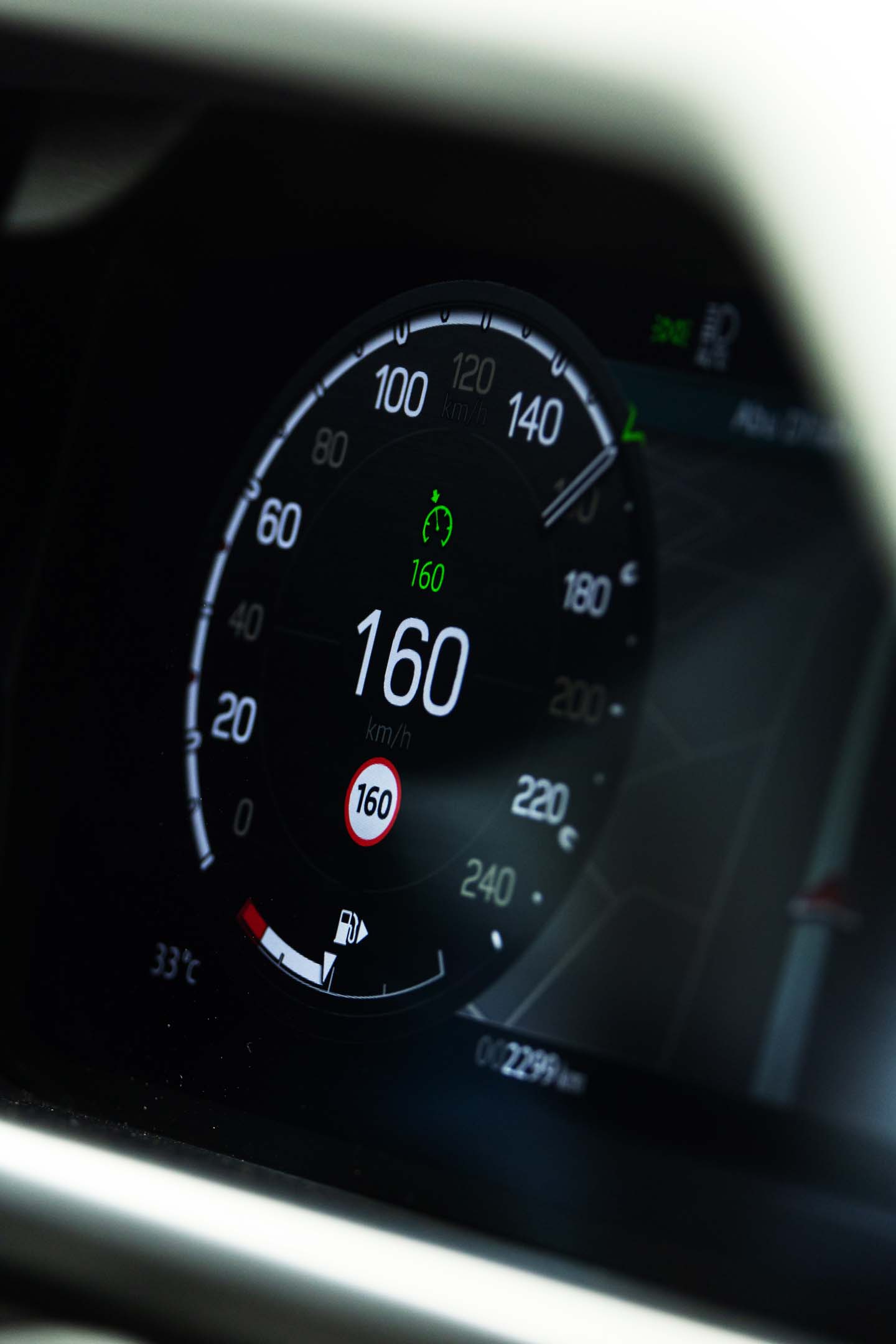
Mini matchup: Fuel consumption
| MODEL | MIN RON | WLTP (COMBINED) |
|---|---|---|
| Defender D300 SE | D | 7.9L/100km |
| LandCruiser 300 VX | D | 8.9L/100km |
| Everest Platinum | D | 8.5L/100km |
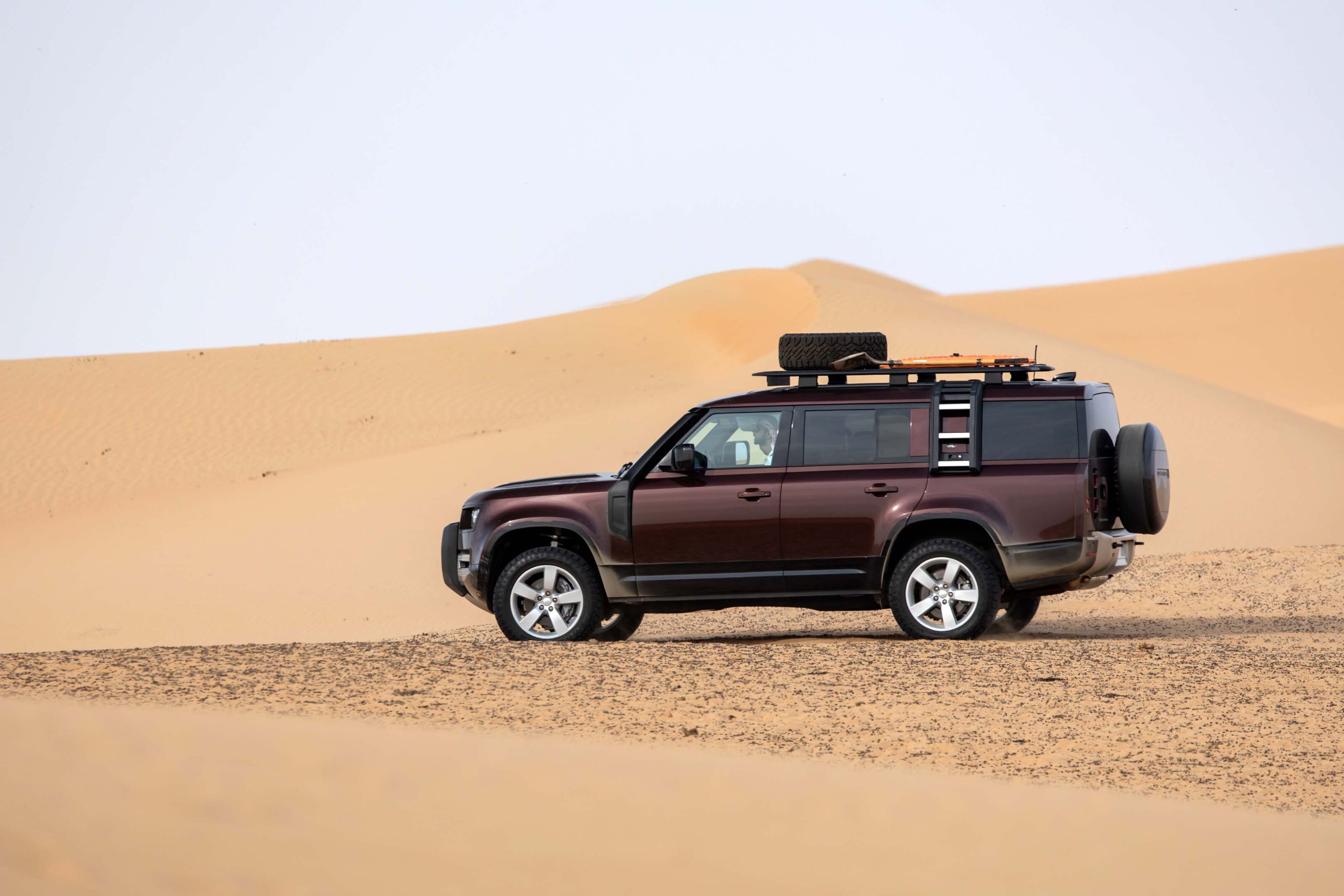
How safe is it?
The Defender has a five-star ANCAP rating. It feels almost indestructible.
Standard safety features include auto emergency braking, blind-spot assist, a 3D surround-view camera, adaptive cruise control, lane-keep assist, 360-degree parking aid and rear collision monitor.
That’s on top of traffic sign recognition, wade sensing, a driver fatigue monitor, a tyre pressure management system and rear traffic monitor.
Unlike the optional seats that can be squeezed into the back of the 110, the Defender 130’s third row also comes with two top tethers, so if you’re on ANCAP’s page and it says that the rear seats don’t have top tethers, that’s why.

Warranty and running costs
Five-year warranty with unlimited kilometres. That’s the deal. What’s more, you’re covered for five years on any genuine Land Rover accessories you buy too.
The paint surface is also covered for that period, while the bodywork is covered for six years against corrosion. Note that this is for body panels only, not brightwork or wheels.
Land Rover offers a fixed-price servicing plan for the Defender over five years or a set number of kilometres. Go for the D300 diesel and that plan is priced at $2650 including GST, but opt for the P400 petrol and the asking price drops to $2250.
It’s also worth mentioning that you get Land Rover Roadside Assistance for the length of your warranty. Roadside slightly undersells what you get, however, as the scheme also provides help if you become bogged or disabled on roads that only four-wheel drives can travel. It’d be interesting to test the limits of that wording.

VERDICT
If you have a family or you’re just useless at packing light, the 130 suddenly becomes the Land Rover Defender of choice.
Of course, there are some caveats. It’s the most expensive Defender, it can tow the least and it’s the least capable off-road. All of these considerations are relative though. Taken in isolation, the Defender 130 remains a phenomenally capable vehicle, on road and off.
Some may still have difficulty knowing quite what to expect of a modern Defender. I certainly wouldn’t recommend trying to hose one out. Indeed, the Defender 130, with its fully carpeted cabin, high-end finishes and big infotainment screen almost feels like Range Rover standards of luxury.

Despite the impression of quality, the Defender hasn’t forgotten how to roll its sleeves up and it’s likely that more utilitarian versions will arrive once Land Rover has figured out its supply travails.
There is quite a price to pay for a Defender 130 and that will also serve to limit quite how adventurous owners may feel with their vehicles.
Nevertheless, as our drive in the farthest reaches of the Emirates proved, the Defender retains substance. It’s just added a bit of style. We could come around to that combo.
Specifications
| 2023 Land Rover Defender 130 SE P400 | |
|---|---|
| Engine | 2995cc I6 dohc 24v turbo-petrol |
| Power @rpm | 294kW @ 5500rpm |
| Torque @rpm | 550Nm @ 2000rpm |
| Transmission | 8-speed automatic |
| Body | 5-door, 8-seat full-size 4×4 SUV |
| L/W/H | 5358/2008/1970mm |
| Wheelbase | 3022mm |
| Boot space | (389L / 2291L) |
| Weight | 2527 kg |
| Fuel / tank | 95 RON / 90 litres |
| Fuel use L/100km | 10.1L (claimed) / 13.3L (on test) |
| Suspension | Front: double wishbone, air springs,, anti-roll bar / Rear: multi-link, air spings, anti-roll bar |
| Steering | electric rack-and-pinion; 12.8m turning circle |
| Brakes | ventilated discs front and rear |
| Wheels | 20-inch, Style 5098 five-spoke alloy (as tested) |
| Tyres | Goodyear Wrangler Duratrac (option tyre as tested) |
| Tyre size & spare | 255/60R20 f/r, full-size spare |
| Price | $131,650 + on-road costs |







